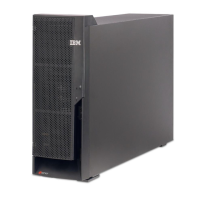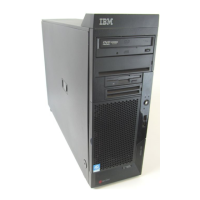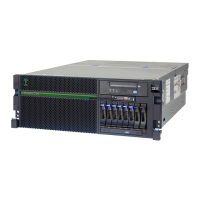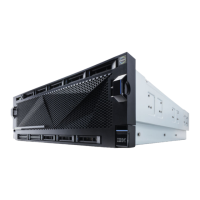Workload, capacity, and performance 55
Draft Document for Review October 18, 2004 5486wrkperf.fm
PM Eserver iSeries and IBM Eserver Workload Estimator include disk arm
statistics and arm requirements for sizing. Use PM Eserver iSeries or IBM
Eserver Workload Estimator to help size the minimum number of disk arms
required for a given iSeries processor. Performance Tools for iSeries provides
detailed reports on collected performance data.
Solution developers and other application solution providers also have
recommendations for a minimum configuration as it relates to their solution.
To ensure you have sufficient disk arms to meet the needed workload, it is best to
have performance runs from your current system run at a time when the disk
workload is heavy. These can then be used as input to various tools including the
IBM Eserver Workload Estimator and PATROL for iSeries – Predict.
You can also use the reports to determine the number of disk requests/second
that are happening on your current system, as reported in the System
Performance Report and other Performance Tools reports.
Disk workload is measured in terms of operations/second. Depending on the
speed or vintage of the disk drives and controllers, average service time should
be somewhere in the 3.5 to 10 millisecond range (lower for newer, higher for old
7200 rpm disks). Numbers higher than these can indicate a disk bottleneck and
therefore stored demand. Use tools such as PATROL for iSeries – Predict to
determine the stored demand. Note that the tools assume a properly tuned
system. If a bottleneck exists, the system cannot be properly tuned.
The number of disk arms required can be determined from the number of disk
accesses that must be performed each second.
If upgrading to a larger or newer system, the new system typically can perform
more disk requests each second. In addition, more memory acts like a read
cache and can reduce the number of physical disk accesses that must occur.
The following general rules apply in many cases. These rules assume an
average disk access size of between 6k and 10k in size (shown in the
performance report). If you are in the over 25k range, lower the values by 20%.
This also assumes that
all disks are the same size and use the same type of
controller.
Historically 10k rpm disk drives on #2748/#2778/#4727/#4778 disk unit
controllers (with 15 drives attached to the controller) could do about 20 disk
operations/second with adequate or good performance. By the time you reached
Note: There is no substitute for proper modeling.
